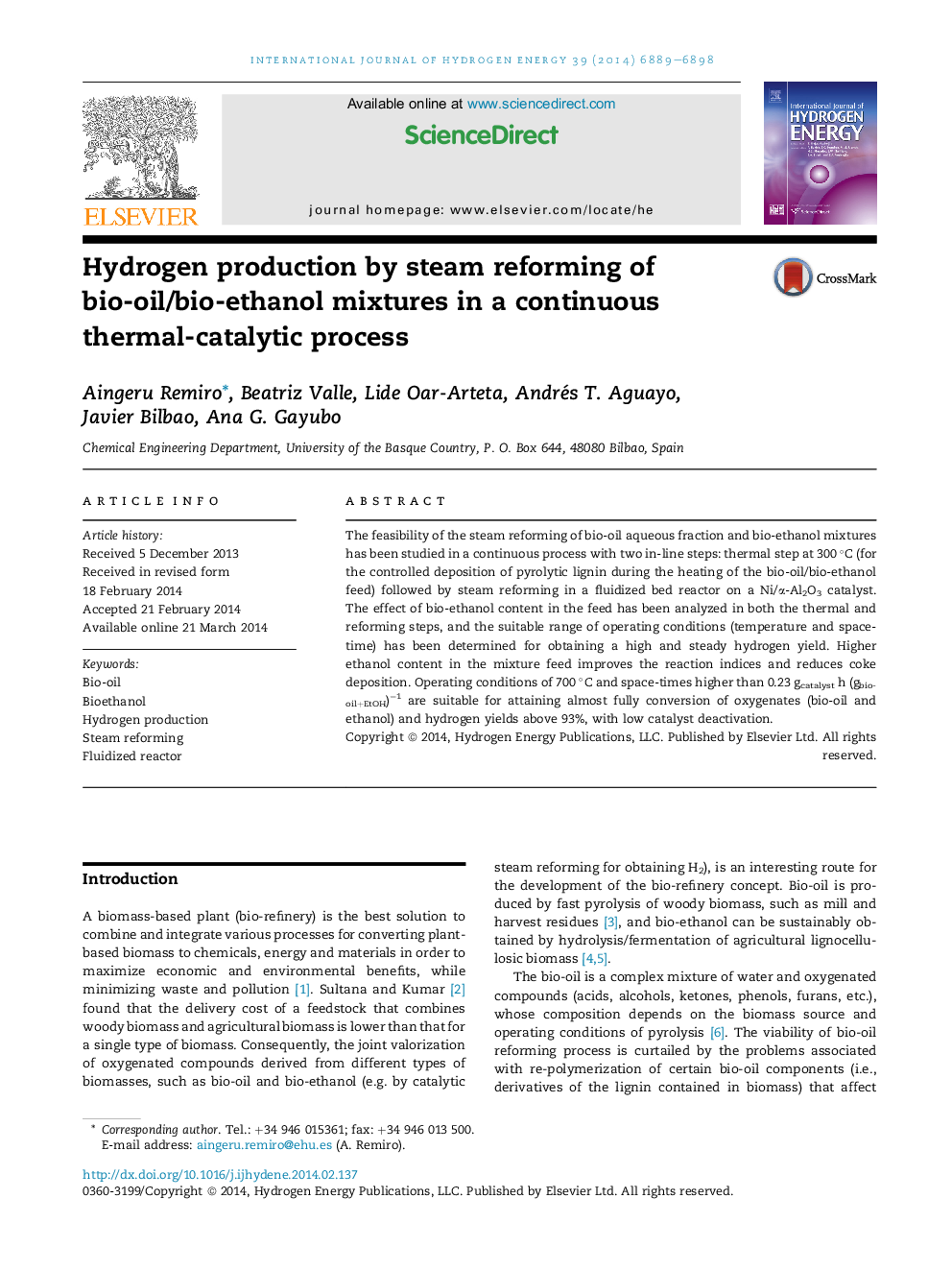| Article ID | Journal | Published Year | Pages | File Type |
|---|---|---|---|---|
| 1273444 | International Journal of Hydrogen Energy | 2014 | 10 Pages |
•Aqueous bio-oil/bio-ethanol mixture is reformed in a two-step continuous system.•The joint SR is a promising route for obtaining H2 from different types of biomass.•Ethanol addition attenuates slightly pyrolytic lignin deposition in the thermal step.•Ethanol addition stabilizes bio-oil SR by reducing the coke formation.•700 °C is optimum for attaining full conversion, high H2 yield and stability.
The feasibility of the steam reforming of bio-oil aqueous fraction and bio-ethanol mixtures has been studied in a continuous process with two in-line steps: thermal step at 300 °C (for the controlled deposition of pyrolytic lignin during the heating of the bio-oil/bio-ethanol feed) followed by steam reforming in a fluidized bed reactor on a Ni/α-Al2O3 catalyst. The effect of bio-ethanol content in the feed has been analyzed in both the thermal and reforming steps, and the suitable range of operating conditions (temperature and space-time) has been determined for obtaining a high and steady hydrogen yield. Higher ethanol content in the mixture feed improves the reaction indices and reduces coke deposition. Operating conditions of 700 °C and space-times higher than 0.23 gcatalyst h (gbio-oil+EtOH)−1 are suitable for attaining almost fully conversion of oxygenates (bio-oil and ethanol) and hydrogen yields above 93%, with low catalyst deactivation.
Graphical abstractFigure optionsDownload full-size imageDownload as PowerPoint slide
